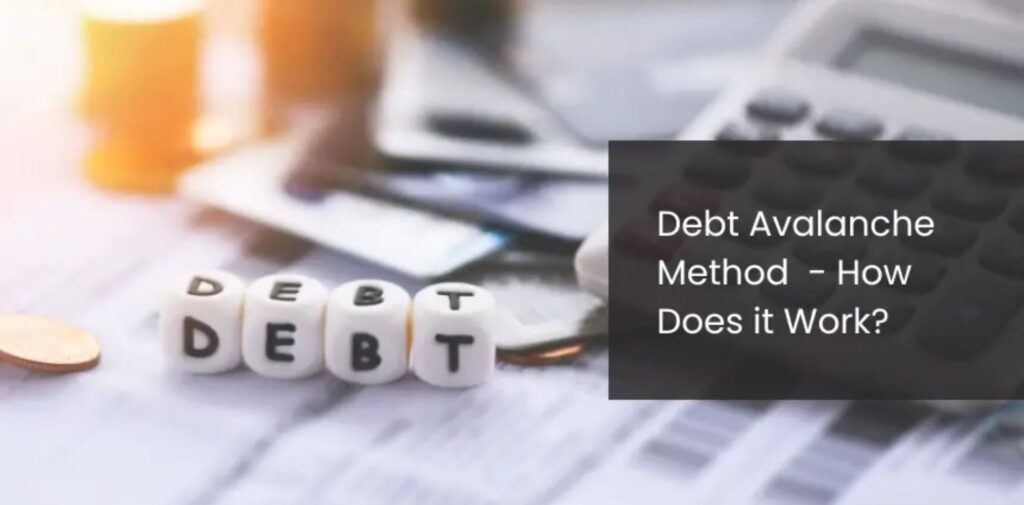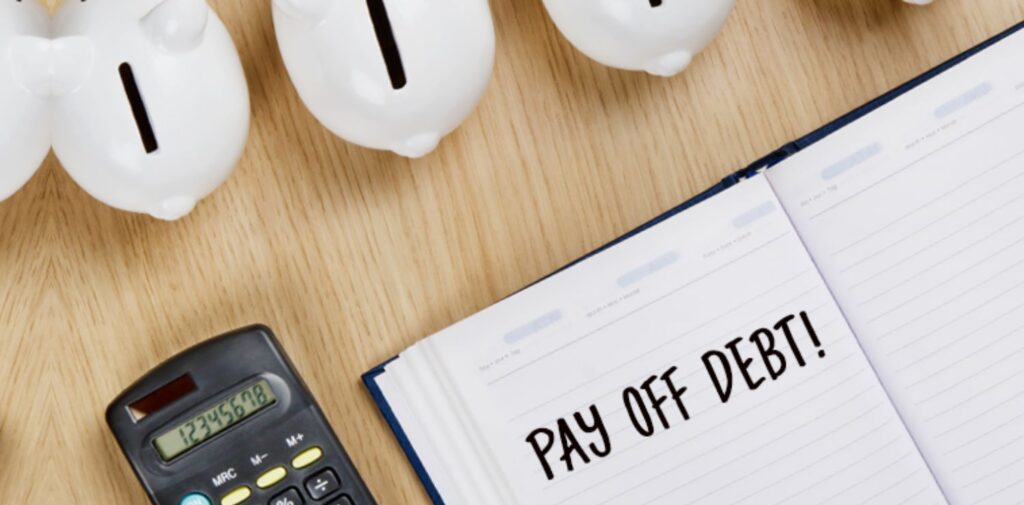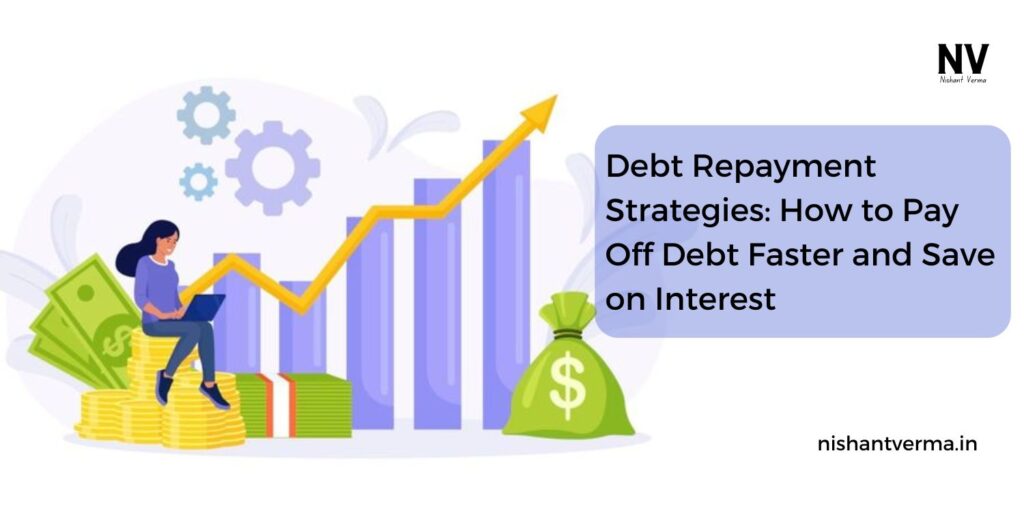Have you ever felt like your debt is growing faster than you can pay it off? Do you look at your loan statements and wonder, “How can I pay off my debt faster without getting buried under interest?” If you’re a new business owner or someone looking to get rid of personal debt in India, this question probably crosses your mind more often than you’d like.
The good news is that paying off debt faster is not only possible but with the right strategies, you can also save a lot of money on interest. By following a structured plan and being disciplined, you can get yourself out of debt in no time.
In this article, we’ll explore effective debt repayment strategies, so you can start tackling your loans, improving your financial situation, and saving money for the future.
Why is it Important to Pay Off Debt Faster?
Before diving into the strategies, let’s answer the question: Why should you aim to pay off debt faster?
Debt may seem like a temporary problem, but if left unchecked, it can snowball. In India, interest rates on personal loans, credit cards, and home loans can be pretty high, especially on credit cards (which can charge interest as high as 36% annually). The longer you take to pay off your debts, the more interest you end up paying — which means the debt will linger longer than you want it to.
For example, imagine you took a ₹1,00,000 personal loan at 15% interest for 5 years.
- If you make just the minimum payments, you’ll end up paying ₹1,50,000 by the end of the term, with ₹50,000 in interest alone.
- However, if you pay it off quicker, you can save a significant portion of that ₹50,000 in interest.
The earlier you pay off your debt, the less money you’ll waste on interest.

What Are the Best Strategies to Pay Off Debt Faster?
Let’s get into the meat of this article: How can you start paying off debt faster and save money in the process? We’ll explore several debt repayment strategies that can work wonders, whether you have credit card debt, personal loans, or any other kind of debt.
Debt Snowball Method: Start Small, Get Motivated!
Have you heard of the debt snowball method? It’s a strategy where you start by paying off your smallest debt first, and then work your way up to the larger debts. This method helps build momentum and gives you psychological motivation as you clear each debt.
Example:
Let’s say you have three debts:
- Credit card debt: ₹30,000
- Personal loan: ₹50,000
- Home loan: ₹2,00,000
According to the debt snowball method, you’ll first focus on paying off the smallest debt — the ₹30,000 credit card debt. Once that is paid off, you move on to the personal loan, and finally, tackle the home loan.
While this may seem like a slow start, paying off a small debt quickly gives you the motivation to keep going. It creates a sense of accomplishment that can help you stay on track with your remaining debts.

Debt Avalanche Method: Save Money on Interest
If your primary goal is to save as much money as possible on interest, then the debt avalanche method is for you. With this strategy, you focus on paying off the debt with the highest interest rate first, which reduces the total interest paid in the long run.
Example:
If you have:
- Credit card debt with 30% annual interest: ₹50,000
- Personal loan with 12% interest: ₹1,00,000
- Home loan with 8% interest: ₹5,00,000
According to the debt avalanche method, you’d first pay off the credit card debt with the 30% interest rate. While it might feel tempting to pay off the home loan first because it’s the largest, focusing on the credit card will save you the most money in the long run. Once the high-interest debts are gone, you’ll save a lot on interest and can tackle the lower-interest debts.
Consolidate Your Debts: One Loan, One Payment
If you have multiple debts with different interest rates and due dates, it can become difficult to keep track of everything. One effective solution is debt consolidation. This involves taking out a single loan to pay off all your existing debts, leaving you with just one payment to manage.
The benefit of this strategy is that it can lower your overall interest rate and make repayment easier since you’ll have only one loan to focus on.
Example:
You owe:
- ₹50,000 on a credit card at 30% interest
- ₹1,00,000 personal loan at 15% interest
You can opt for a personal loan consolidation where you borrow ₹1,50,000 at a lower interest rate, say 12%. You’ll use this loan to pay off both the credit card and personal loan, leaving you with just one payment at a reduced interest rate.
Tip: Make sure the consolidation loan has a lower interest rate than your current debts to make this strategy effective.
Pay More Than the Minimum Payment: Stretch Your Budget
If you’re only making the minimum payments on your loans or credit cards, you’re probably paying a lot more in interest than you realize. Minimum payments usually cover only the interest, which means your principal balance (the actual amount you owe) doesn’t decrease much.
To pay off your debt faster, you should aim to pay more than the minimum payment. Even adding ₹1,000-₹2,000 extra each month can significantly reduce your debt.
Example:
Let’s say you have a ₹50,000 loan at 12% annual interest, with a minimum monthly payment of ₹1,000. If you only pay the minimum, you may end up paying ₹60,000 or more by the time the loan is fully repaid. However, if you increase your payment to ₹2,000, you’ll pay off the loan much faster and save on interest.
Use Windfalls or Bonuses to Pay Off Debt
Whenever you receive a bonus at work, an inheritance, or even a tax refund, instead of spending it on lifestyle upgrades, consider using it to pay off your debt. These extra amounts can be powerful tools to reduce your outstanding balance quickly.
Example:
If you receive a ₹50,000 bonus, rather than spending it on something else, use it to pay down your debt. This could cut down your loan term significantly and help you save on future interest.
Cut Back on Expenses and Reallocate Funds
If your current expenses are eating into your ability to pay off debt, it’s time to reevaluate your budget. Take a close look at areas where you can cut back, such as dining out, subscriptions, or discretionary spending. Redirect this extra money towards paying off your debt.
Example:
If you typically spend ₹5,000 a month on eating out and entertainment, try cutting that back to ₹2,000. The remaining ₹3,000 can go towards paying off your debt.

How to Stay Motivated and Stick to Your Plan?
Paying off debt can feel like a long journey, but staying motivated is key. Here are a few tips to keep you on track:
- Set small, achievable goals: For example, aim to pay off ₹10,000 in a month, and celebrate when you achieve it.
- Track your progress: Keep an eye on how much debt you’ve cleared. Seeing your balance drop can be a huge motivator.
- Find accountability: Share your goal with a friend or family member to keep yourself accountable.
Conclusion: Debt Repayment Strategies
Debt may feel overwhelming, but by following the right strategies and staying disciplined, you can pay off your debts faster, save on interest, and improve your financial situation. Whether you choose the debt snowball method, debt avalanche method, or another strategy, the key is to take action and make your money work for you.
What are your thoughts on paying off debt faster?
Have you tried any of these strategies, or do you have your approach? We’d love to hear about your experiences! Share your ideas and tips in the comments below, and let’s help each other get closer to financial freedom!




